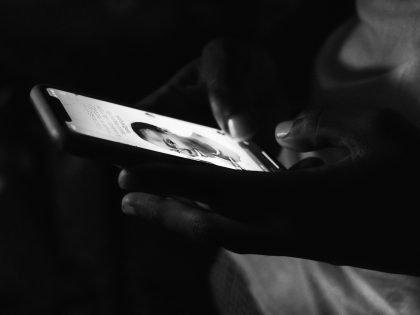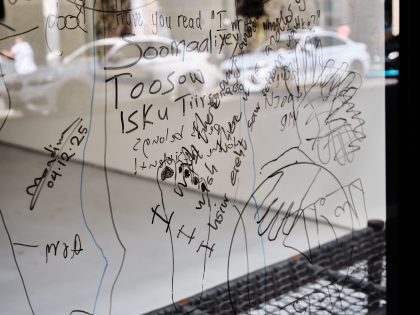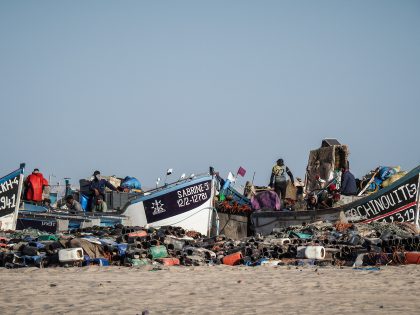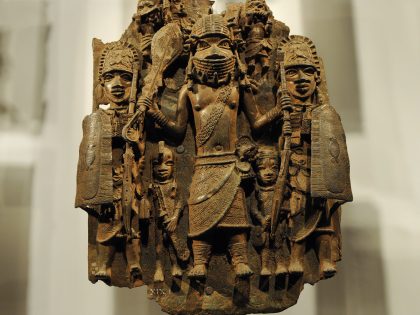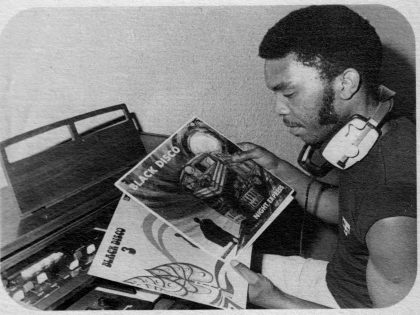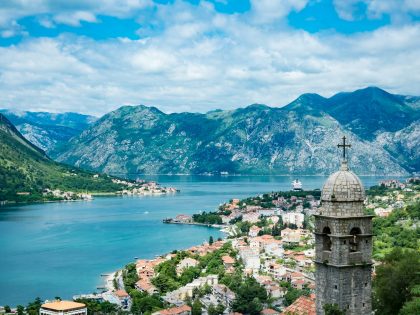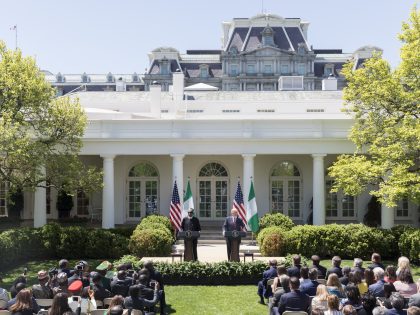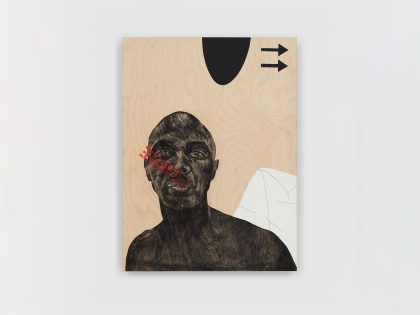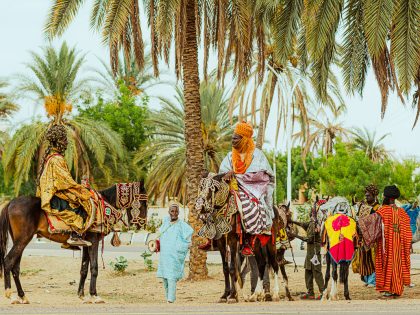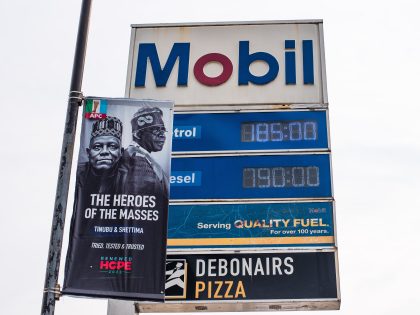Anton Kannemeyer’s Africa
How meanings, symbolism, and narratives of “other” places and products shift when contextualized within and against South Africa.

Image: Jack Shainman Gallery.
Die Antwoord skirts–and often dabbles in–homophobia and racist depictions in their videos and lyrics. Ostensibly to shake white South Africans out of their “middle class stupor.” Most of the time it does not work. Which is why we wondered what the large portraits of Yolandi Vi$$er and Waddy Jones (Ninja) were doing in Kannemeyer’s exhibit “After the Barbarians” that just finished (last weekend) at the Jack Shainman Gallery in New York.
Kannemeyer’s other portraits of well known figures tend to deride their subjects, as in the portrait of Jacob Zuma which appears in the show with the words: “King Klepto My President” emblazoned across it. The absence of textual commentary in the portraits of Yolandi and Ninja, however, prevents any straightforward interpretation. Is Kannemeyer giving them such grandiose proportions to compare their performances to those of the politicians he criticizes, or are the portraits laudatory? Kannemeyer’s cryptic representation seems uncharacteristic, though it wouldn’t come as a great surprise to discover he admires their brand of irreverence.
The rest of the works in the show are more directly message driven—as in the mock-anthropological “Fair Maidens of Africa” featuring women with severed hands, presumably referencing atrocities by the “barbarian” colonizers of the former Belgian Congo (recalling also the amputations of Sierra Leone’s civil war).
The show draws on several series of Kannemeyer’s and as such, seems tailored as an introduction to the range of Kannemeyer’s work rather than as a thoughtfully curated ensemble.
But one theme connecting many of the pieces is Kannemeyer’s expanded interest in matters no longer strictly confined to South Africa. In addition to his exploration of other colonial atrocities such as the amputations of the Congo, the show features portraits of Barack Obama and George W. Bush (in his continuing Alphabet of Democracy series) as well as a reference to the Abu Ghraib scandal. For me, the most interesting new works in the show were the collages entitled “Made in South Africa” which in meticulous arrangements juxtapose newspaper and magazine clippings with advertisements and Kannemeyer’s own drawings. Among other things the works suggest a newfound interest in exploring how the meanings, symbolism, and narratives of “other” places and commercial products shift when contextualized within and against South Africa.

